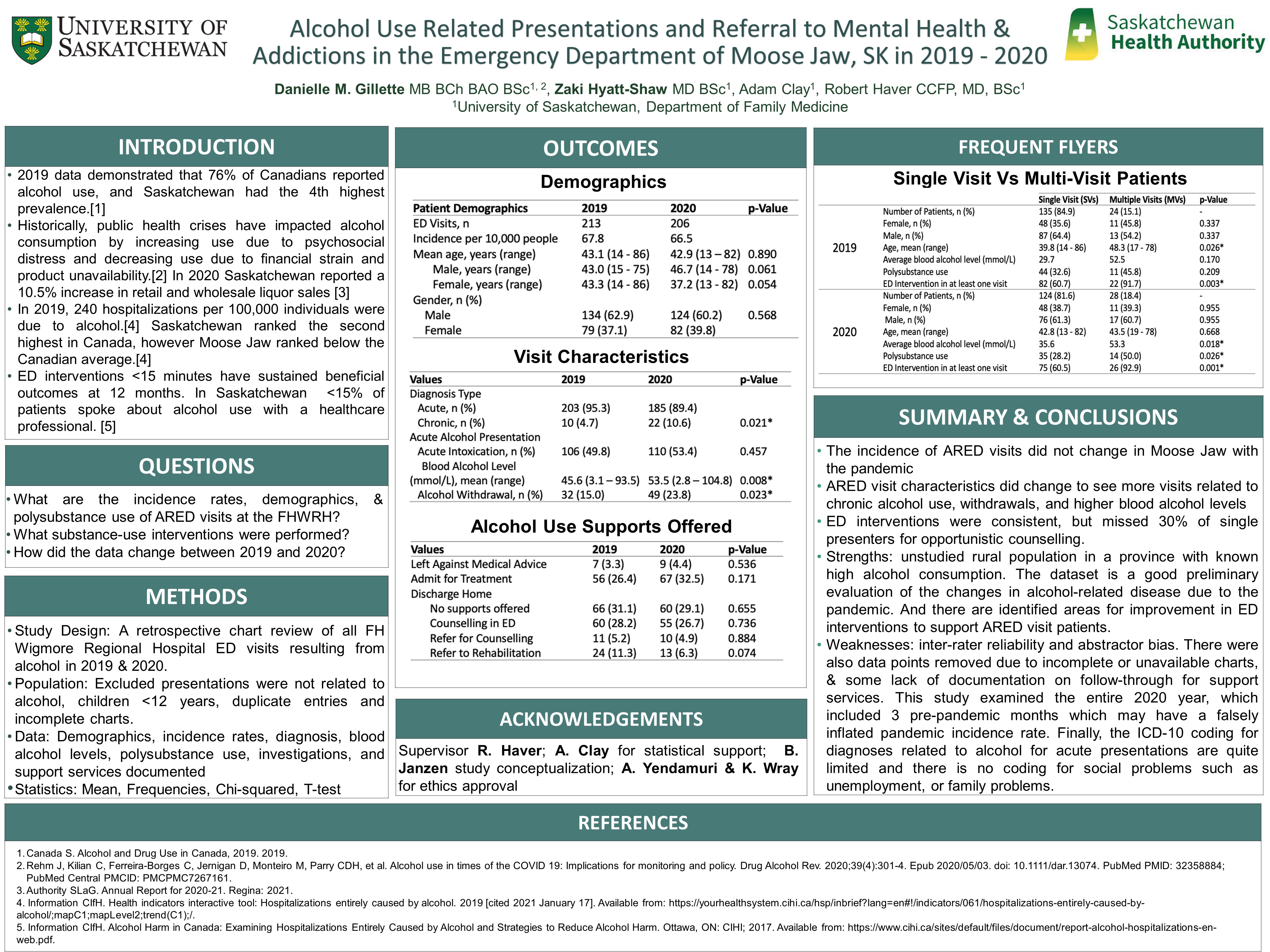
B1.0: Alcohol Use Related Presentations and Referral to Mental Health & Addictions in the Emergency Department of Moose Jaw, SK in 2019 - 2020
Danielle Gillette, Zaki Hyatt-Shaw, Adam Clay, Robert Haver
Background: Alcohol-related emergency department (ARED) visits have not been studied in Moose Jaw, Saskatchewan. Alcohol-use interventions undertaken in the emergency department (ED) and impact of the pandemic on ARED visits are unknown. Questions What were the incidence, demographics, poly-substances and ED management of ARED visits to FH Wigmore Regional Hospital (FHWRH) in 2019-2020?
Methods: This retrospective chart review included ARED visits to FHWRH between January 1, 2019–December 31t, 2020. Patients <12 years old were excluded. Presentations were assessed for diagnosis, polysubstance use, disposition, and substance use support. The project was granted Ethical Approval by University of Saskatchewan & Operational Approval from the SHA (OA-UofS-2653/2735).
Results: There were 419 ARED visits with a mean age of 43 years. The incidence of ARED visits was 67.8 and 66.5 per 10,000 people, with men representing 62.9% and 60.2% in 2019 and 2020. Marijuana was the most common co-ingested substance. 2020 demonstrated higher chronic alcohol complications (4.7% vs 10.6%), blood alcohol levels (45.6 vs 53.5mmol/L), and alcohol withdrawal presentations (15% vs 23.8%). In 2019, multiple visits (MVs) vs single visits (SV) had a higher average age 48.3 years. In 2020, MVs had higher rate of polysubstance use than SVs (50% vs. 28.2%). More support services were offered for MV than SV patients. In 2019 and 2020, 31.0% and 29.1% of patients were discharged without any alcohol-use support.
Discussion: Moose Jaw incidence of ARED visits was consistent, which is consistent for rural-area literature findings. Increased withdrawal visits and average blood alcohol is consistent with increased provincial consumption. An increase in counselling about harmful alcohol use in the ED may benefit the community.
Conclusion: No change to the incidence of ARED visits was observed between 2019-2020. 2020 demonstrated higher withdrawal visits and blood alcohol levels.
